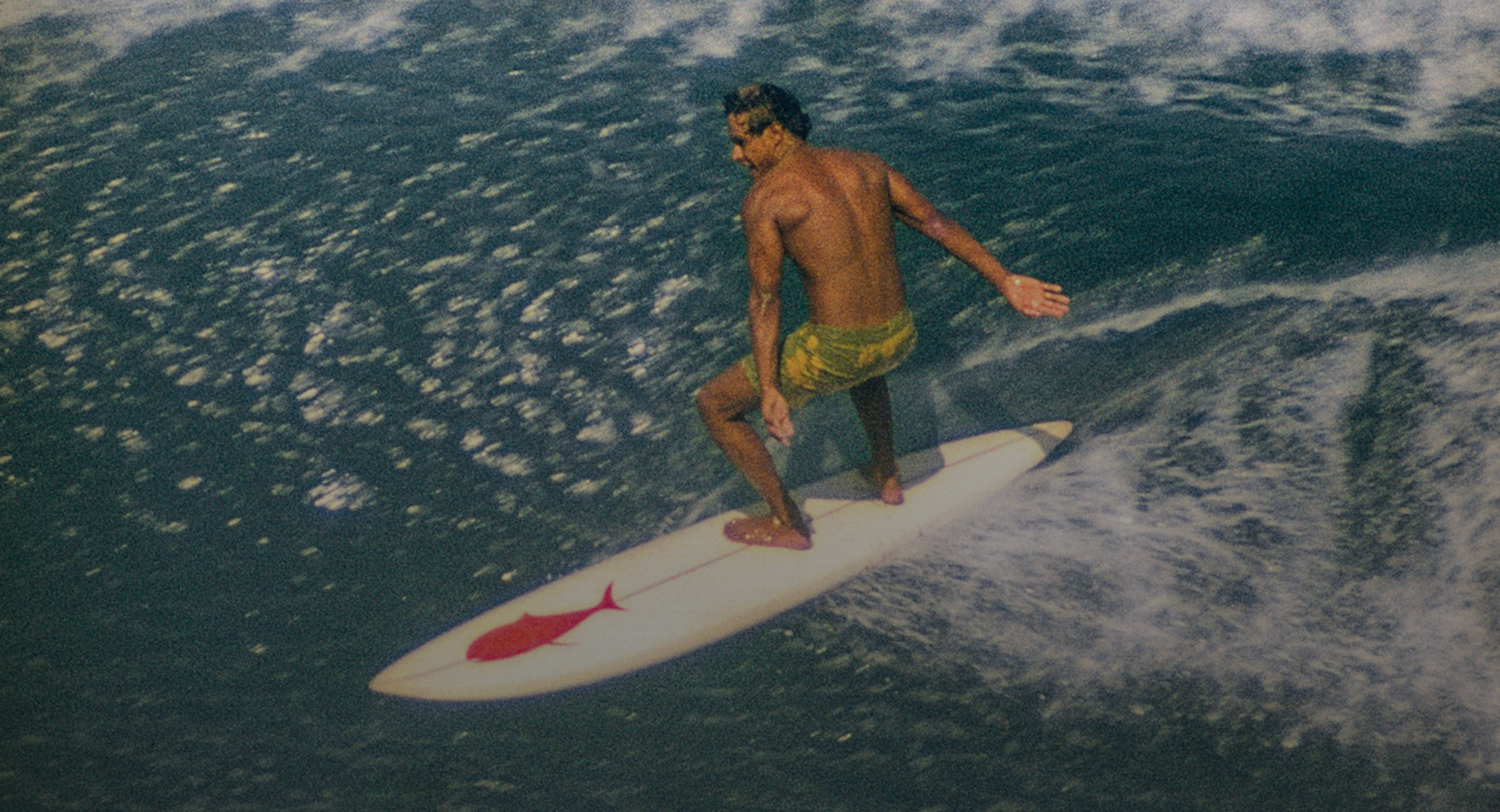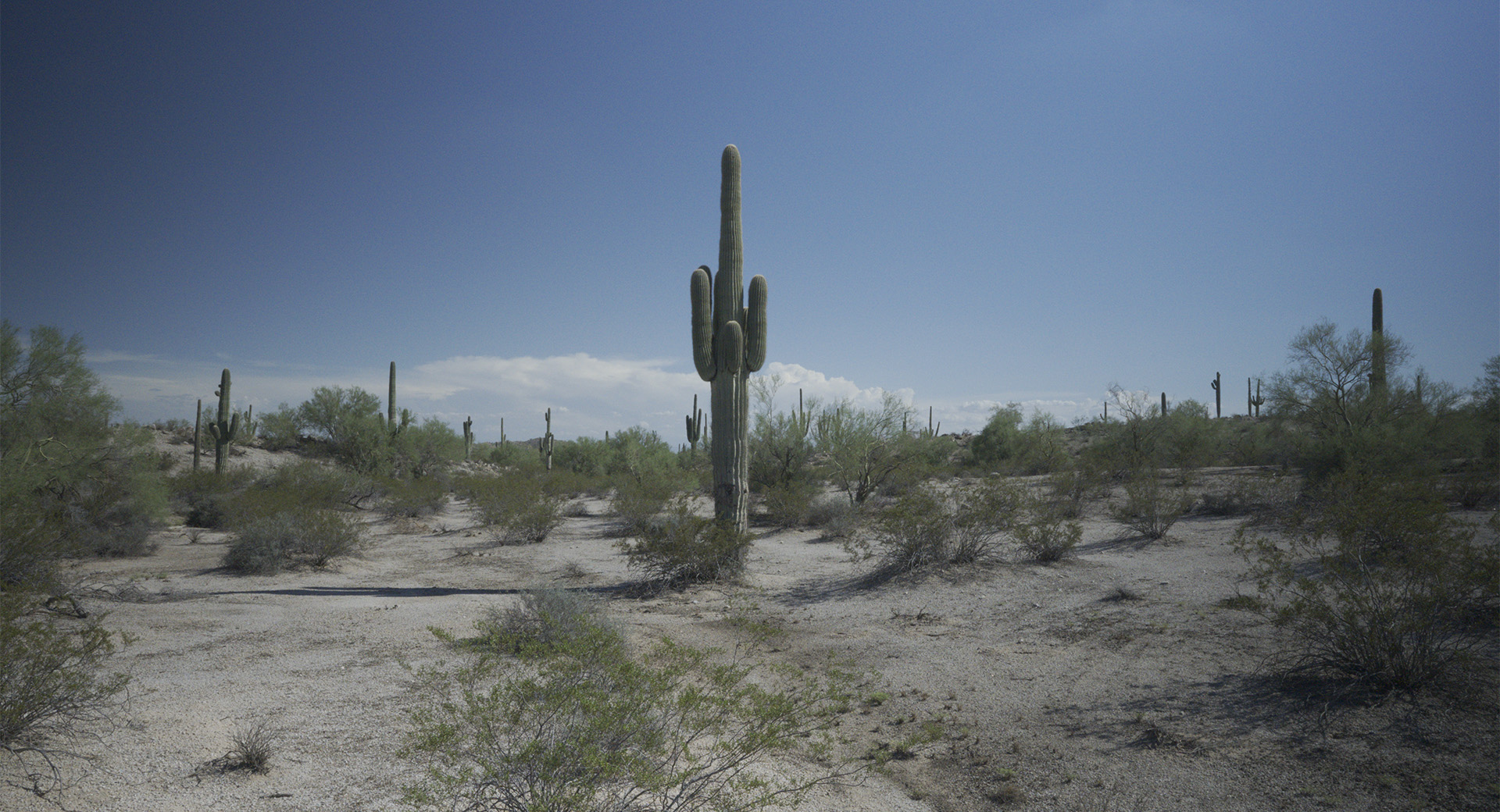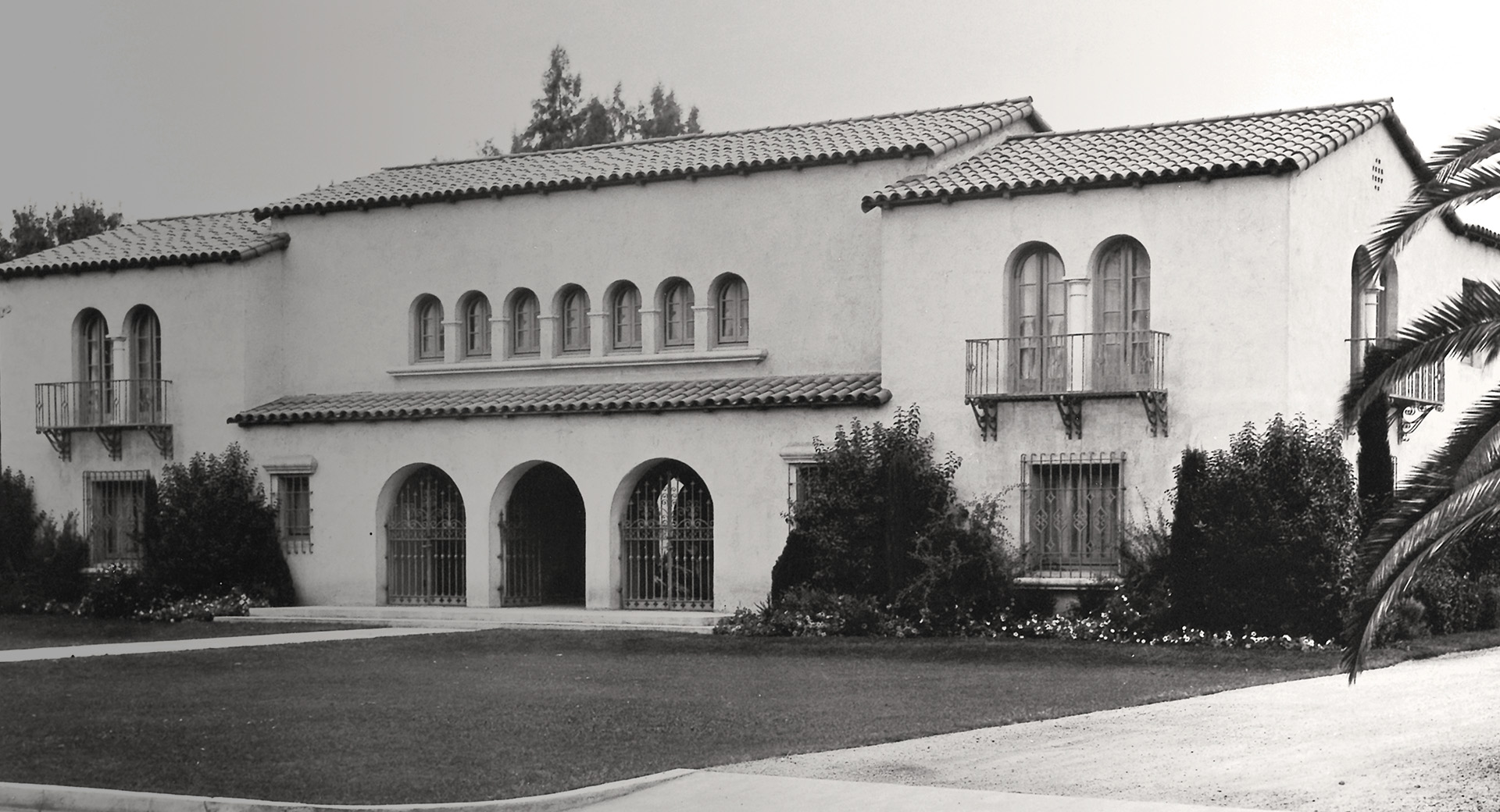Daniel Ikaika Ito, artist and guest contributor
A Native narrative illuminates a historically accurate account of an Indigenous people’s identity without the shadowy, geopolitical lens of a colonized nation. It shines a light on the origin of a culture. With the clarity it brings, there is agency for a Native population in today’s world.
He’e Nalu: The Art and Legacy of Hawaiian Surfing is a visually engaging exhibition of surfing’s Indigenous origin, its cultural significance and its influence on extreme sports. This exhibition opened at the Heard Museum in January and will be on display until July. He’e Nalu: The Art and Legacy of Hawaiian Surfing is a Native narrative of an Indigenous people’s cultural practice that has evolved into a multibillion-dollar industry and multinational pastime.
Today, there are an estimated 35 million surfers around the world, creating an iconic lifestyle sport that is recognized globally and practiced wherever there is a large body of water. No matter a wave rider’s nationality or skin color, all surfers can trace their roots back tohe’e nalu (wave sliding or surfing) and Kānaka Maoli (Native Hawaiians). The multinational surf industry and its governing bodies—the World Surf League (WSL) and the International Surfing Association (ISA)—control this Hawaiian sport’s narrative. For the most part, there is a dangerous trend of Kanaka Maoli marginalization and disenfranchisement when the story of surfing is manipulated to further an agenda or commercial endeavor.
For example, there is a storyline widely disseminated by the ISA and the surf industry that three-time Olympic Gold Medal swimmer Duke Kahanamoku was the first Kanaka Maoli to share surfing around the world. In the documentary “Waterman” (2020), they call Duke“surfing’s Johnny Appleseed”—whitewashing the memory of the great Native Hawaiian surfer by likening him to early American folklore with a Christian undertone. While Duke will always be regarded as “The Father of Modern Surfing,” he was not the first to take he’e nalu abroad.
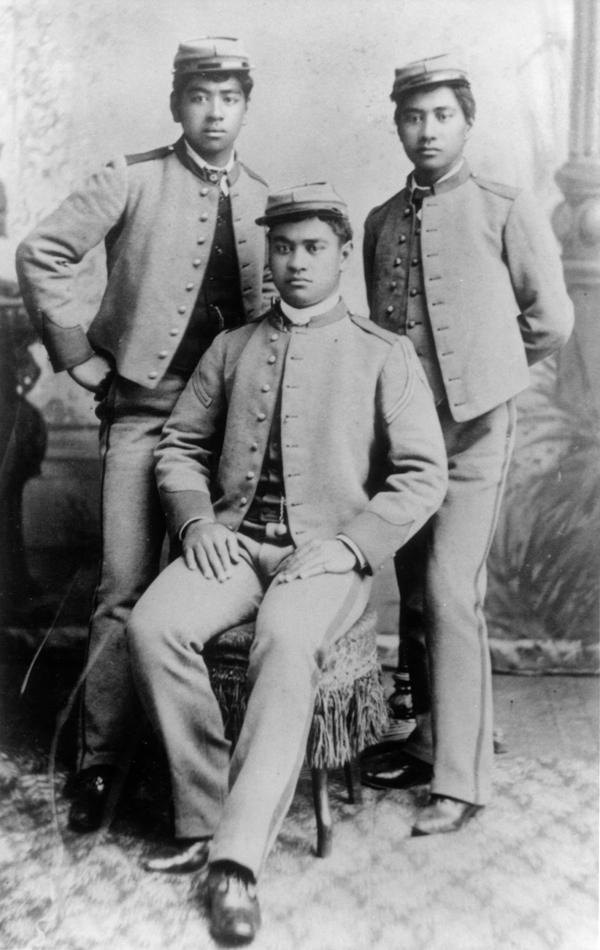
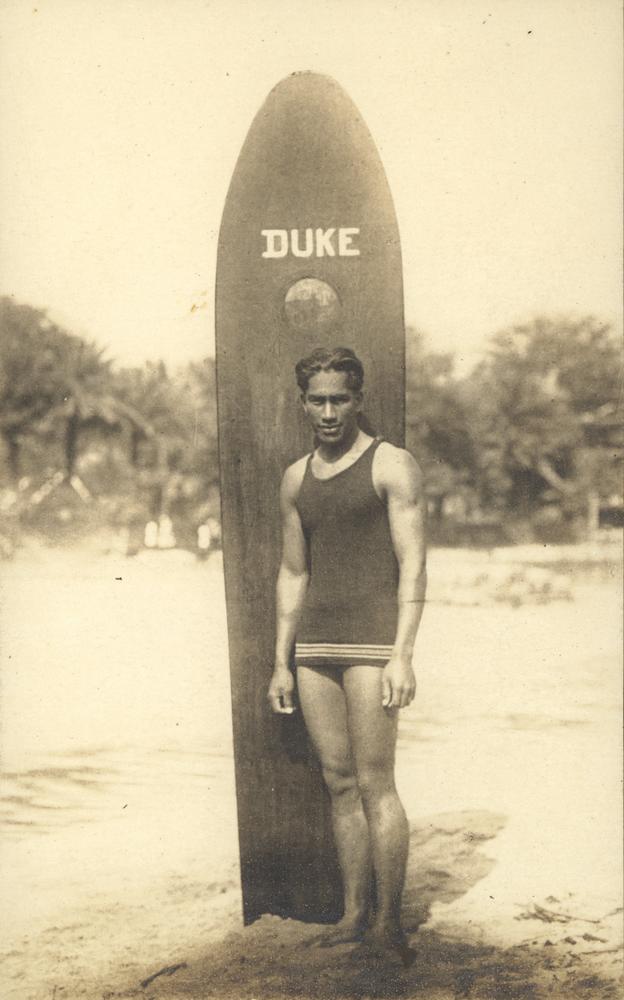
In fact, it was three Hawaiian princes—David La’amea Kahalepouli Kinoiki Kawānanakoa, Edward Abnel Keli’iahonui and Jonah Kūhiō Kalaniana’ole—who introduced he’e nalu outside of Hawai’i when they surfed the mouth of the San Lorenzo River, near Santa Cruz Beach in Northern California, in 1885. Duke would surf in California in 1912 and in Australia two years later. The well-documented historical account of the three Hawaiian princes surfing in Nor Caldoes not help further the agenda of Huntington Beach promoting the nickname of “Surf City,” the global surf industry, or the Olympics, which is probably why it’s not marketed in the mass media the way the story of Duke is. Another seldom-told Native narrative is the exceptional literacy rate that existed in Hawai’i during the Hawaiian monarchy. Hawaiians—and surfers—come from an oral tradition. The Kumulipois the Kanaka Maoli creation story that was passed down from generation to generation through oli(chant), and Hawaiian genealogy and history were perpetuated through mele (song) and hula (dance) until the arrival of the Christian missionaries. The written word was first introduced in Hawai’i by the missionaries in 1820. Native Hawaiians marveled at the Westerners’ technology of mo’olelo (story) onpalapala (paper). From theAli’i (royalty) to the Maka’āinana (commoners), the Kānaka Maoli embraced reading and writing—and Christianity, because the first book printed in ‘ŌleloHawai’i (the Hawaiian language) was Ka Baibala Hemolele (The Holy Bible).

According to Hawaiian Studies professor John Kalei Laimana, the Hawaiian Kingdom boasted a 91% literacy rate by 1832. In 1834, the first Ka Nūpepa ‘Olelo Hawai’i (Hawaiian-language newspaper), called Ka Lama Hawai’i (The Hawaiian Torch), was printed at Lahainaluna School on Maui. In 1880, Laura Judd, an American missionary, teacher and historian, wrote that Hawai’i’s literacy rate was estimated to be higher than that of any other country or region in the world, except for Scotland and New England. By the 20th century, there were nearly a hundred Ka Nūpepa ‘Ōlelo Hawai’i in circulation, documenting the lives, lands and lāhui (nation)of the Kānaka Maoli.
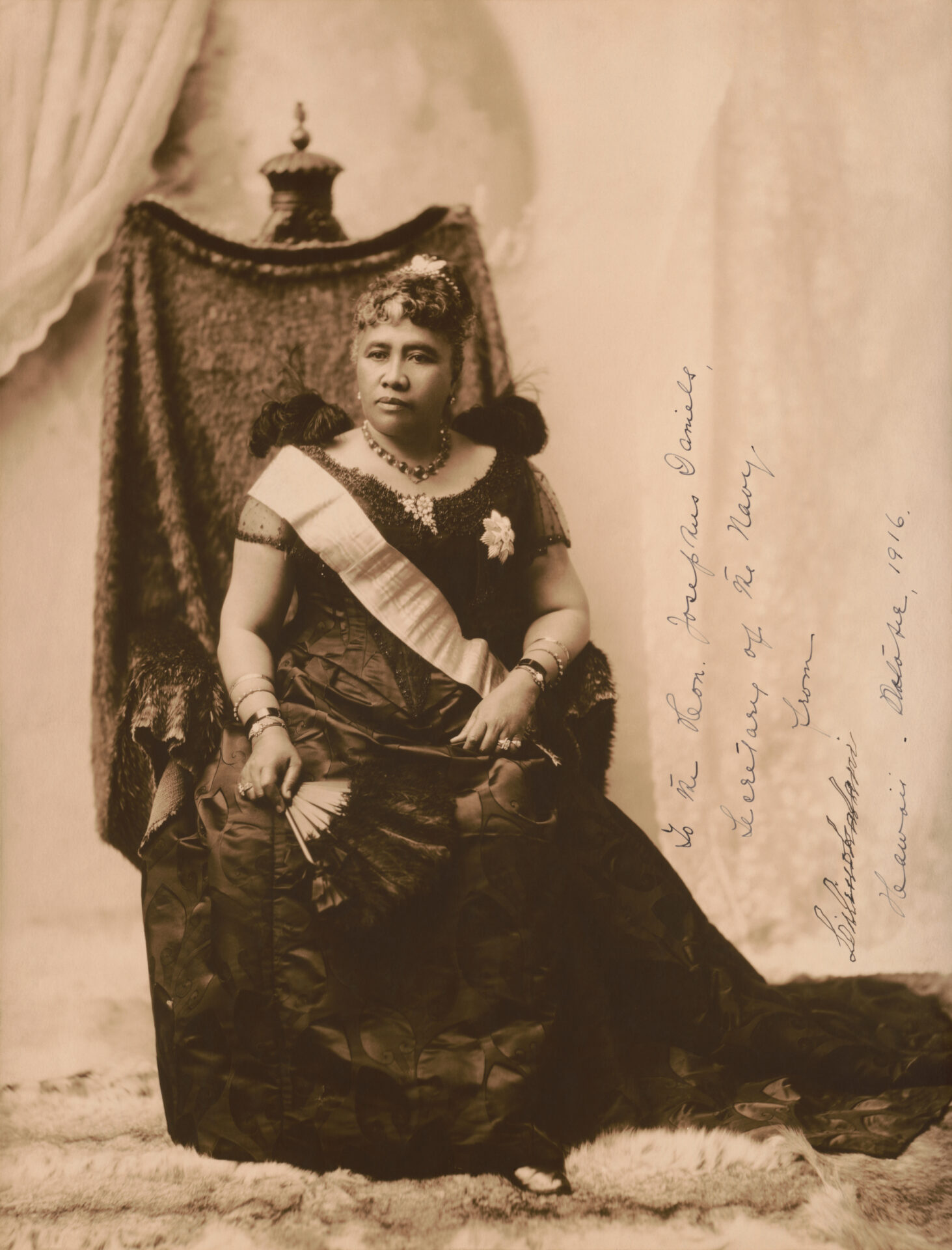
After the illegal overthrow of Queen Lili’uokalani on Jan. 17, 1893, by haole (foreigners, or “those without breath”) businessmen, many Hawaiian-language newspapers became sources of resistance against the new provisional government. Kanaka Maoli publishers and editors offered a platform to the citizens of the Hawaiian Kingdom who were devoted to restoring power to the queen and gaining independence. In 1896, the newly formed Republic of Hawai’i banned the teaching and learning in the medium of ‘Ōlelo Hawai’i, essentially marking the beginning of the end for Ka Nūpepa Hawai’i. It wasn’t until 1978 that the Hawaiian language could be taught in the public school system once again; that year’s Hawai’i State Constitutional Convention allowed it.
I wondered how these events would have been covered by the media if the Hawaiian Kingdom
still existed; my people maintained the high rate of literacy and the Hawaiian language was
never banned in the education system.
The traditions of Hawaiian journalism and he’e nalu have always resonated with me since mydays as a boarding student at the Kamehameha Schools in the late 1990s. Life in the dorms on campus was essentially dry dock for a surfer, because you were without your parents to take you surfing, and underclassmen were not allowed to leave campus on weekdays unless it was for a school-sanctioned activity. Therefore, in high school I would religiously read my dorm advisor’s surf magazines (Surfer, Surfing, Transworld Surfand Longboard magazine) from cover to cover in order to maintain my passion for he’e nalu. When I noticed there weren’t any Kānaka Maoli named in the mastheads of these publications or in the bylines of the articles, I made a vow to become the first Native Hawaiian editor of a surf magazine. I was fortunate to achieve this career goal at age 23 when I became editor-in chief of Free Surf magazine. I would go on to cover he’e nalu for Surfer, Surfing, Surfer’s Journal, the Honolulu Star-Bulletin, the Honolulu Star-Advertiser and ESPN, always striving to bring a Hawaiian perspective to my prose. Throughout my journalism career, I was aware of events in modern surfing history when Kānaka Maoli were disenfranchised by the sport that ourkupuna (ancestors) created. I wondered how these events would have been covered by the media if the Hawaiian Kingdom still existed; my people maintained the high rate of literacy and the Hawaiian language was never banned in the education system.
The accompanying gallery of magazine covers is titled ‘Ahahui Haku Mo’olelo, which means Hawaiian Journalism Association. I view historical events through the lens of a surfer and journalist—it’s how I “associate” the world as a Kanaka Maoli. The kaona (hidden meaning) behind that title also pays homage to my Kanaka Maoli collaborators in this artwork—Art Director Janelle Kalawe and Copy Editor ‘Iwalani Kūali’i Kaho’ohanohano—dear friends with whom I have had the pleasure to closely work at various media organizations throughout mycareer. Furthermore, I offer mahalo (thanks) to haole photographers Don James (via Duke Aipa), Jeff Divine and Mike Latronic for allowing us to use these surfing images for ‘Ahahui HakuMo’olelo. These people supported my vision as an editor-in-chief for the four magazine covers featured here that are in ‘Ōlelo Hawai’i and provide a Native narrative of historical events in modern surf history when Kānaka Maoli were and continue to be disenfranchised in surfing.
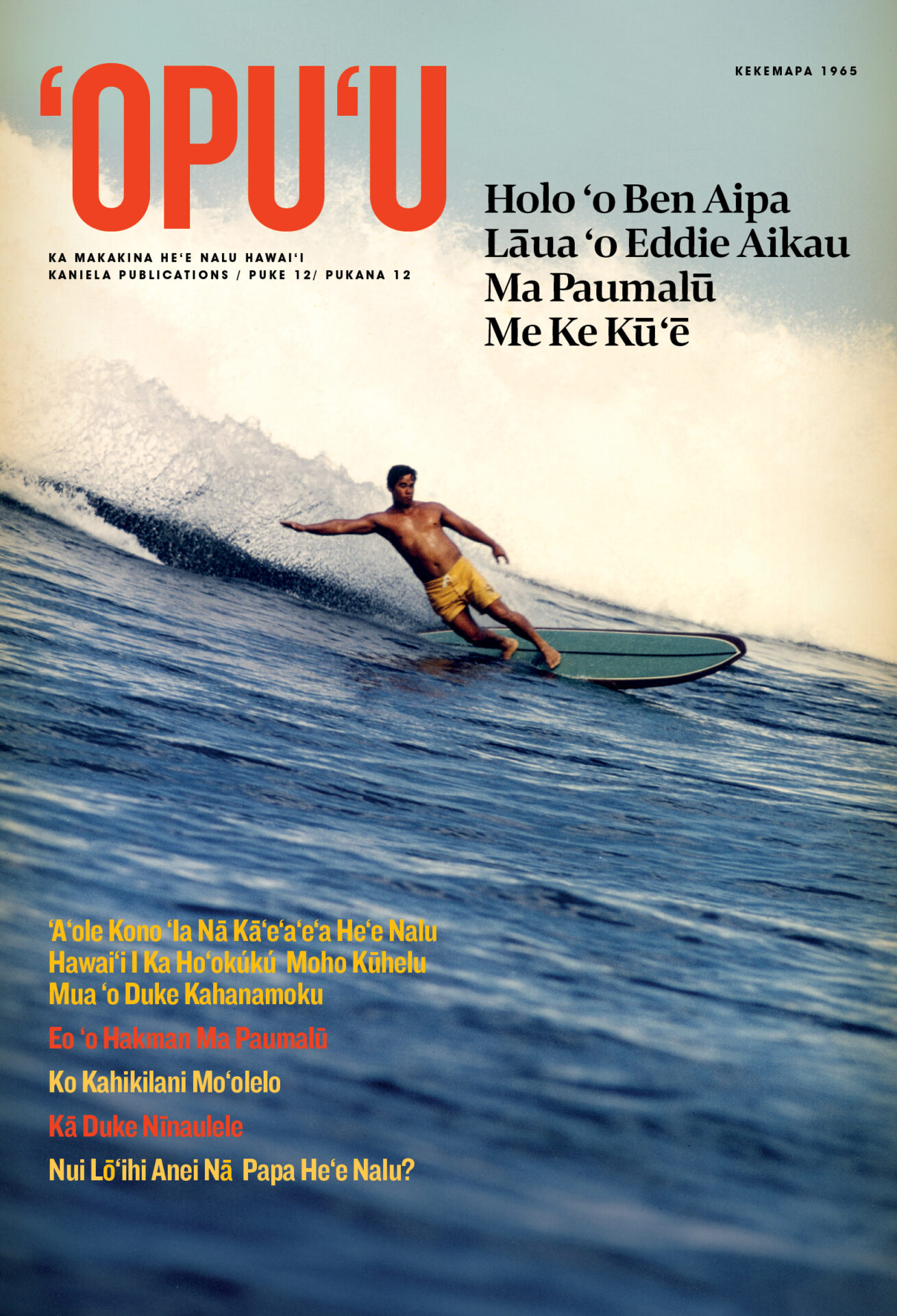
‘ōpu’u
A Large Swell
Holo ‘o Ben Aipa
Lāua ‘o Eddie Aikau
Ma Paumalū
Me Ke Kū’ē
Ben Aipa and Eddie Aikau Paddle Out at Sunset Beach in Protest
‘A’ole Kono ‘ia Nā Kā’e’a’e’a He’e Nalu Hawai’i I Ka Ho’okukūkū Moho Kūhelu Mua ‘o Duke Kahanamoku
Hawaiians Not Invited to Inaugural Duke Kahanamoku Invitational Surfing Championship
Eo ‘o Hakman Ma Paumalū
Hakman Wins at Sunset Beach
Ko Kahikilani Mo’olelo
The Story of Kahikilani
Kā Duke Nīnauele
The Duke Interview
Nui Lō’ihi Anei Nā Papa He’e Nalu?
Are Surfboards Too Long?
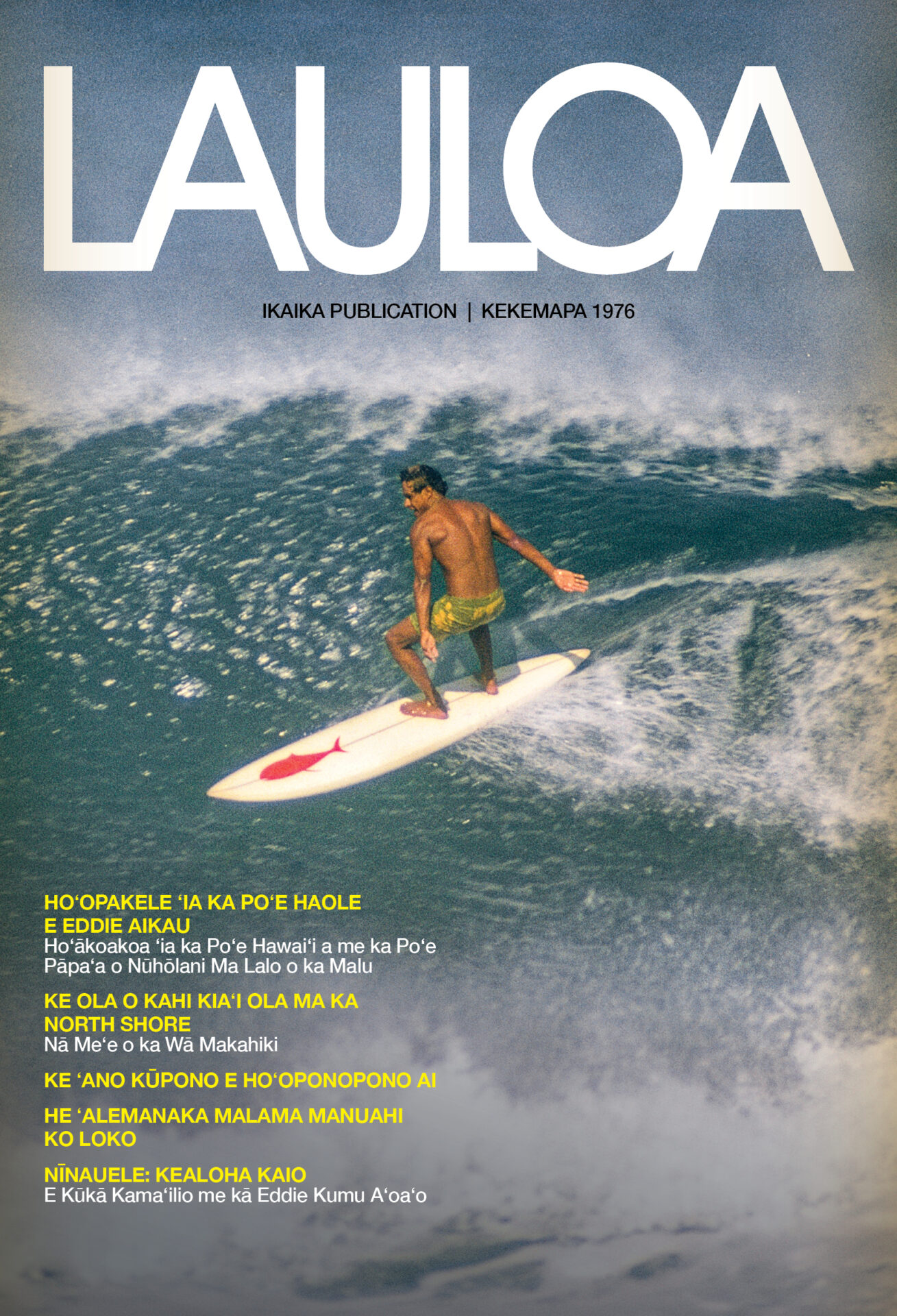
Lauloa
Long Surf/Wave
Ho’opakele’ia Ka Po’e Haole
E Eddie Aikau
Eddie Aikau Saves Haole People
Ho’ākoakoa ‘ia ka Po’e Hawa’i a me ka Po’e
Pāpa’a o Nūhōlani Ma Lalo o ka Malu
Brings Hawaiians and Bronzed Aussies Together for Peace
Ke Ola O Kahi Kia’i Ola Ma Ka North Shore
Life of a North Shore Lifeguard
Nā Me’e o ka Wā Makahiki
Heroes of Makahiki Season
Ke ‘ano Kūpono E Ho’oponopono Ai
How To Ho’oponopono
He ‘alemanaka Malama Manuahi Ko Loko
Free Moon Calendar Inside
Nīnauele: Kealoha Kaio
Interview: Kealoha Kaio
E Kūkā Kama’ilio me kā Eddie Kumu A’oa’o
Talk Story with Eddie’s Mentor
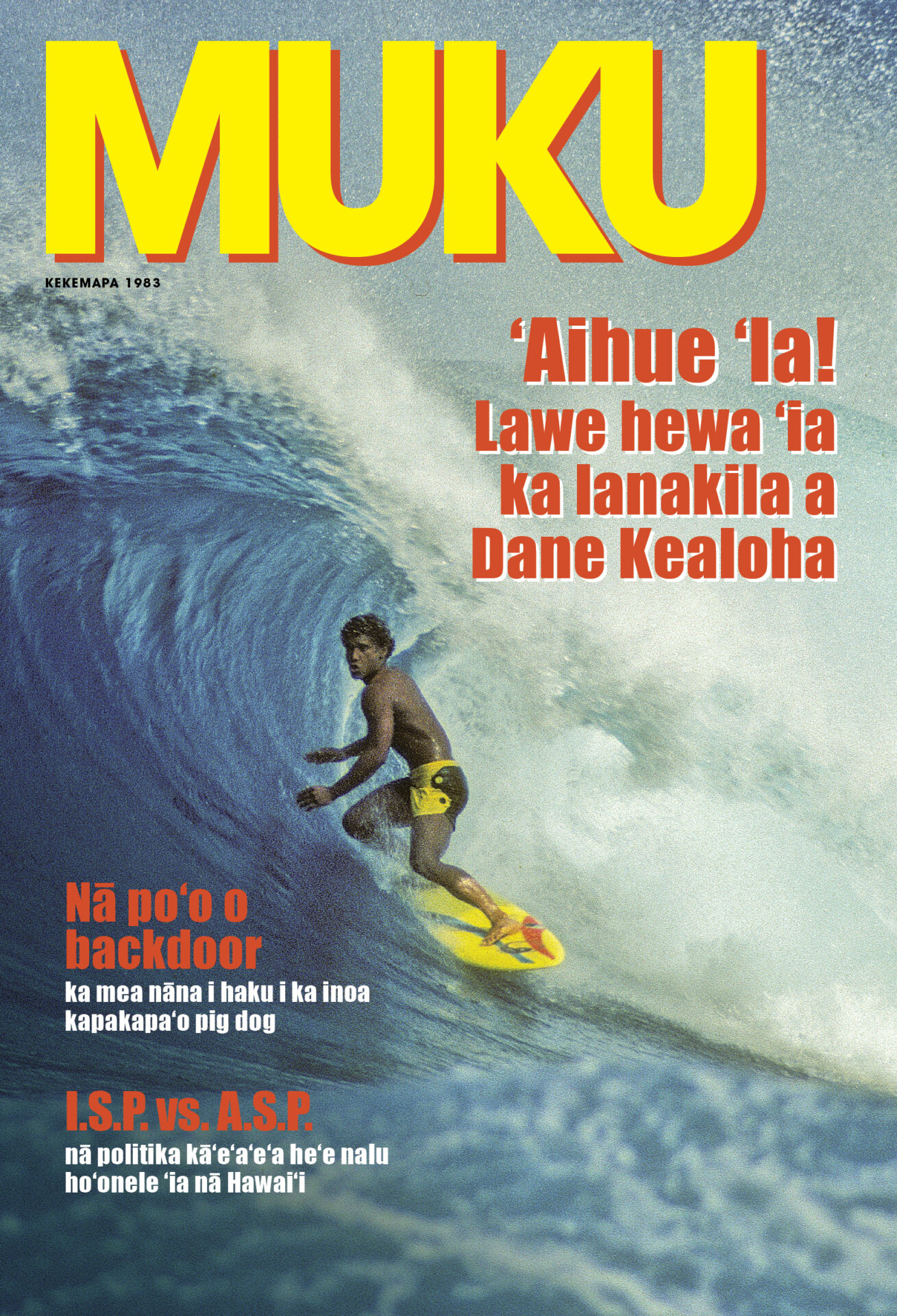
Muku
Broken Section of a Wave
ʻAihue ʻIa!
Stolen!
Lawe hewa ʻia
ka lanakila a
Dane Kealoha
Dane Kealoha Robbed of World Championship
Nā poʻo o backdoor
Backdoor Vanguard
ka mea nāna i haku i ka inoa
kapakapa ʻo pig dog
Pig Dog Innovator
I.S.P. vs. A.S.P.
nā politika kāʻeʻaʻeʻa heʻe nalu
hoʻonele ʻia nā Hawaiʻi
Pro Surfing Politics Disenfranchise Hawaiians
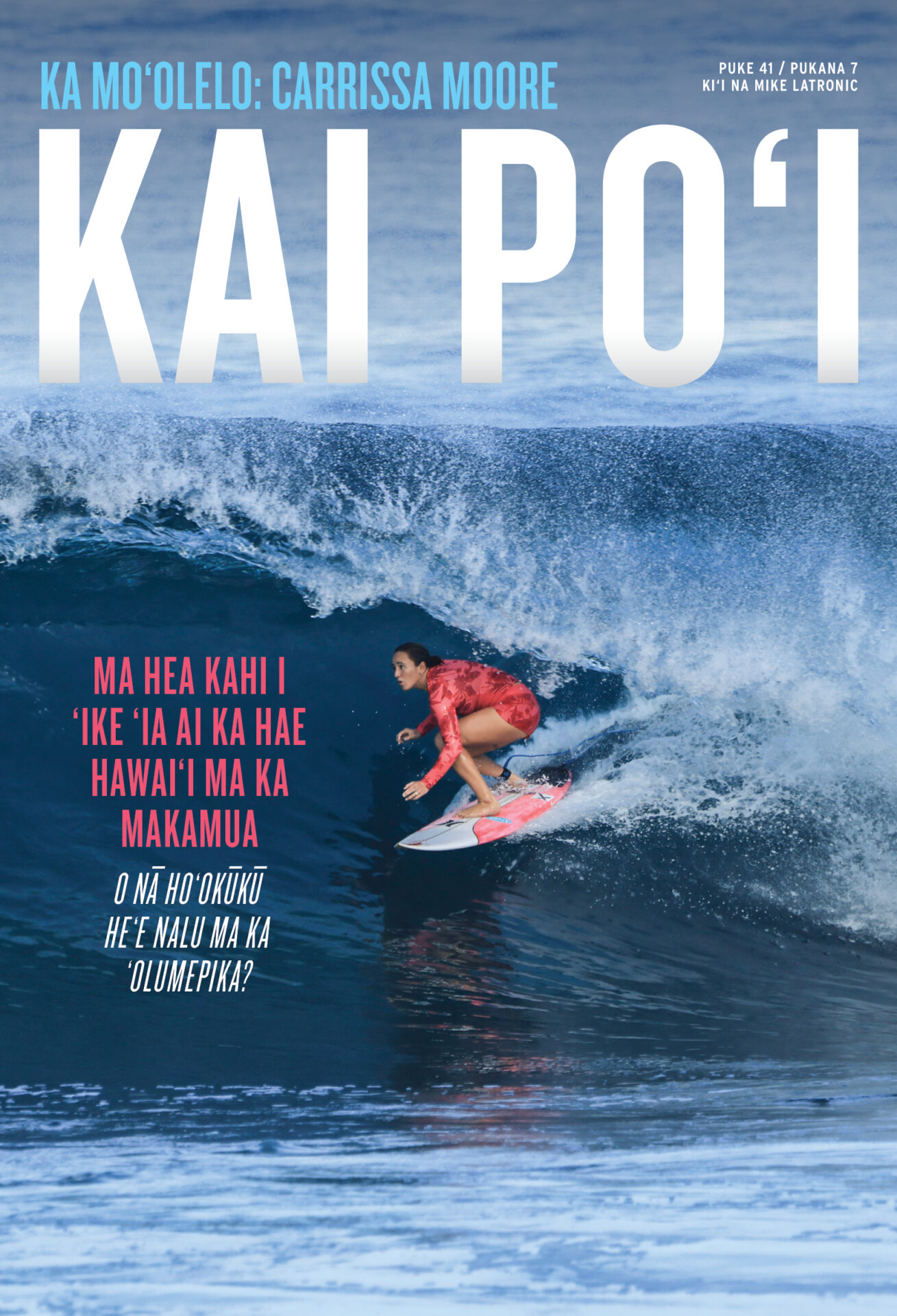
Kai Poʻi
Breaking Surf
Ma Hea Kahi I ʻike ʻia Ai Ka Hae Hawaiʻi Ma Ka Makamua
O Nā Hoʻokūkū
Heʻe Nalu Ma Ka
ʻOlumepika?
Where Was the Hawaiian Flag
in Surfing’s Olympic Debut?
